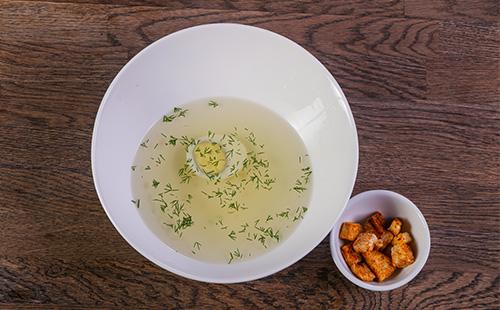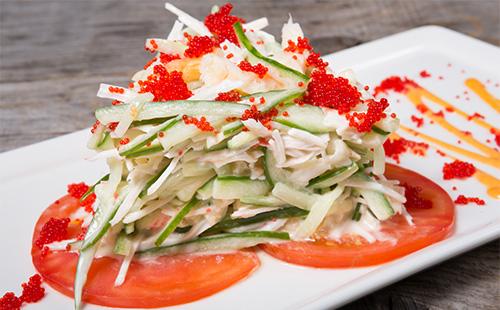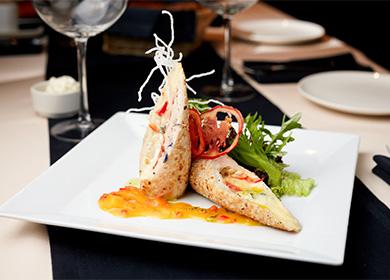The content of the article
For a long time, it was believed that pancreatitis causes alcohol abuse. This false impression was formed because it was first discovered and described using alcoholics as an example. But now it is already known that their most dangerous, acute stage is almost never found in them - this is the "prerogative" of people with a healthy attitude to strong drinks.
Pancreatitis can be a consequence of overeating (now also considered a form of dependence), pathologies of other digestive organs, endocrine disorders. Regardless of the etiology, form and stage of the course, it greatly disrupts digestion, threatens the state of the metabolic system, and sometimes the patient’s life. Nutrition for pancreatitis is built primarily on a protein basis (the stomach digests proteins) and involves thorough grinding of food.
Body functions
The pancreas is heterogeneous in the structure and functions of its tissues. The main part of its cells produces pancreatic juice - concentrated alkali with enzymes dissolved in it (or rather, their inactive precursors). Pancreatic juice forms the digestive environment of the intestine. The bacteria that inhabit its various departments play an important, but supportive role.
The main bile duct also runs through the pancreatic tissue. It leads from the gallbladder to the duodenum, falling at the very exit into its lumen into the main duct of the gland itself. As a result, alkali, enzymes and bile enter the intestine not separately, but in the form of a ready-made “mixture”.
Causes of the disease
In the acute stage, pancreatitis leads to blockage of the small ducts of the gland, through which the pancreatic juice flows into the main, and then into the lumen of the duodenum. There is an effect of its "self-digestion" by enzymes accumulated inside. Acute pancreatitis can be caused by the following reasons.
- Gallstones. They arise due to inflammatory pathology of the liver or gall bladder, anomalies in the composition of bile (they are caused by sepsis, taking medications for atherosclerosis, diabetes mellitus, and the same liver diseases).
- An infection. Viral (mumps, hepatitis, etc.) or parasitic (helminthiasis). The causative agent affects the cells of the gland, causes tissue edema and impairs its function.
- With drugs. Toxic effects of atherosclerosis, steroid drugs and some antibiotics.
- Deviations in the structure or location. They can be congenital (bend of the gallbladder, too narrow ducts, etc.) or acquired (scarring after surgery or traumatic examination, a tumor).
Chronic pancreatitis can most often be observed in drunken alcoholics and diabetics “with experience” of at least five years. The autoimmune process in the gland that caused inflammation or the use of antidiabetic drugs (Metformin) is important here. But he can also accompany the following diseases.
- Intestinal pathology. Especially the duodenum, including duodenitis (inflammation of its walls) and erosion.
- Vascular disease. All glands should be actively supplied with blood. A special role is played by congenital anomalies and coagulation disorders (hemophilia, thrombosis).
- Injuries. Penetrating wounds, interventions, strong blows to the abdomen.
The most common cause of pancreatitis is the spasm of the sphincter of Oddi, which ends in the common gallbladder and pancreatic duct. The sphincter of Oddi is located at the very exit from it into the duodenum. Normally, it regulates the "portioned" supply of pancreatic juice and bile into its cavity, allows you to almost stop it in the interval between meals and dramatically increase when a person sits at the table. It also prevents the backflow of intestinal contents along with various pathogens (bacteria, foreign compounds, worms) into the cavity of the pancreas or gall bladder.
Sphincter of Oddi is not prone to spasms, like all smooth-muscle “dividers” of this type. For a long time, such a thing as his own dysfunction did not exist in medicine. It was replaced by various "biliary dyskinesias" and "postcholecystectomy" "syndromes" (a complication of gallbladder removal). But in fact, his spasm is a rare thing only during normal functioning of the nervous system. But he often catches up with neurological disorders or as a result of activation of pain receptors - when he is irritated by stones leaving the gallbladder, his injury occurs.
Signs
Acute pancreatitis begins and is accompanied by unbearable (up to loss of consciousness) girdle pain in the entire upper abdomen, under the ribs. Antispasmodics, painkillers and antibiotics do not remove it, common drugs “from the heart” - “Corvalol”, nitroglycerin also do not help. Special nutrition will also not relieve pain - you need a doctor, not a diet. Usually, although not always, it radiates upward, into the region of the heart, under the collarbone, into the thoracic spine, due to which patients can confuse pancreatitis symptoms with a heart attack or exacerbation of osteochondrosis. This is facilitated by cascading reactions of the body to a critical force stimulus:
- jumps in blood pressure (hypertension and hypotension are equally likely);
- interruptions in heart rate;
- fainting
- cold, clammy sweat.
The characteristic symptom for pancreatitis is loose stools - mushy, containing semi-digested food fragments and fat. It appears already after a few hours from the onset of the disease. By the end of the first day, discoloration of feces with urine becomes noticeable. Normally, bilirubin from bile stains them with a yellow-brown color, through which digestion takes place. And because of the blockage of the duct, it does not enter the intestine. On the second or third day, flatulence, “sucking” under the spoon and vomiting at the sight of greasy or spicy foods increase in the patient.
Chronic pancreatitis also occurs with pain, but not so pronounced. They can intensify an hour after eating, especially if it was inappropriate - cold, fried, smoked, greasy, spicy, accompanied by alcohol.Pain sensations intensify when lying on the back, digestion is disturbed up to dyspepsia (when almost unchanged food comes out instead of feces).
Effects
Acute pancreatitis is dangerous by rapid (two to three days) “eating” of the pancreatic tissue through, resulting in caustic alkali, bile and digestive enzymes directly into the abdominal cavity through this “fistula”. This scenario ends with diffuse peritonitis (inflammation of the peritoneum, which quickly spreads to the organs of the abdominal cavity), the appearance of multiple erosions and death.
Peritonitis is characteristic of many pathologies, including perforated ulcer, cancer of the stomach or intestines, appendicitis, if it was accompanied by a breakthrough of the abscess (due to this scenario, the magician Harry Houdini died). If pancreatitis was triggered not by a mechanical obstruction (spasm of the sphincter of Oddi, stone, scar, tumor, etc.), but by infection, a purulent pancreatic abscess may develop. His untimely treatment also ends with a breakthrough into the abdominal cavity.
Enzymes and digestive juice of the pancreas sometimes cause enzymatic pleurisy - inflammation of the pleura of the same type as in the case of the peritoneum. For chronic pancreatitis, delayed in time are typical, but complications more seriously disturbing its work and other organs.
- Cholecystitis. And cholangitis is an inflammation of the hepatic ducts. They themselves can cause pancreatitis due to the accompanying cholelithiasis, but they often form in the reverse order - as a consequence of it.
- Gastritis. The stomach is not connected with the pancreas as closely as the liver, although it is located directly beneath it. His inflammation in pancreatitis arises not so much due to foreign substances entering the cavity from the inflamed gland, but due to the constant insufficiency of intestinal digestion, which he is forced to compensate for. The pancreatitis diet is designed to reduce the burden on all digestive organs, but the “interests” regarding a healthy stomach are less carefully considered in it. The more pronounced pancreatic degradation, the higher the risk of gastritis.
- Reactive hepatitis. It also develops in response to constant stagnation of bile and its irritation of the hepatic ducts. Sometimes cholestasis, which occurred during the next exacerbation of pancreatitis, is accompanied by jaundice. That's why in a diet with pancreatitis you can not include products that require enhanced separation of bile. Among them are fatty, fried, spicy meat and fish, fish caviar, other animal offal, smoked meats, alcoholic beverages - digestive stimulants.
- Cystosis and Pseudocystosis. These benign neoplasms or the foci of pancreatic juice stagnation simulating them arise due to the same difficulties with its excretion into the duodenal cavity. Cysts tend to periodically become inflamed and suppurate.
- Pancreatic cancer. Any chronic inflammation is considered a carcinogenic factor, since it causes irritation, accelerated destruction of affected tissues and their enhanced response growth. And he is not always benign. The situation is the same with chronic pancreatitis.
- Diabetes. It is not the first "in line" complication of chronic pancreatitis. But the faster and more noticeably all the iron is degraded, the more difficult it is for surviving islet cells to compensate for the deficiency of insulin that arises from the death of their “colleagues” in already dead areas. They are depleted and also begin to die out.The prospect of diabetes in seven to ten years (often - even faster, depending on the prognosis and characteristics of the course of pancreatitis) "experience" for the average patient is becoming more tangible. Due to its threat, the pancreatitis diet should ideally take into account the reduced content of not only fats, but also simple carbohydrates.

Diet therapy
The acute stage of the disease often requires urgent detoxification, the appointment of antibiotics (usually a wide spectrum, since there is no time to determine the type of pathogen), and sometimes surgical intervention. It is necessary if the cause of the disease is a spasm of the sphincter of Oddi, a stone stuck in the duct or another obstruction (tumor). At its end, the basis of treatment should be a special therapeutic nutrition.
Gastroenterologists usually take as a basis diet number 5developed by Manuil Pevzner in Soviet times for patients with cholecystitis and other pathologies that impede the synthesis and outflow of bile. But later, the author himself changed it, creating a diet number 5p.
General Provisions
For adult patients with a mild course of the disease, the option of table No. 5p without mechanical sparing is suitable - not requiring grinding food to a homogeneous mass. A menu for children most often has to be made from pureed products. Eating during an exacerbation of chronic pancreatitis (especially in the first three days from its onset) and in the acute stage that has begun for the first time, there are several mandatory general rules.
- Simplicity. Recipes should be as simple as possible - no stuffed breasts and meat salads, even if all the ingredients in their composition individually “fit” into the diet.
- Complete hunger in the early days. With an exacerbation of the pathology, hunger is prescribed. That is, only warm alkaline drink and maintenance injections intravenously (vitamins, glucose, sodium chloride).
- Extinguishing and cooking only (on water, steamed). Tables No. 5 and 5p do not imply other methods such as baking and frying.
- Minimum fat. Especially if the attack is accompanied (or caused) by cholangitis, cholecystitis. With it, vegetable and animal fats must be equally strictly limited, since the same agent, bile, breaks them down. In a day they can be consumed no more than 10 g, but in any proportion.
- No spices. Especially spicy and spicy.
- No nuts. Seeds are also prohibited. These kinds of foods are rich in vegetable oil and are too harsh to be able to eat even in powder.
- Salt to taste. Its consumption does not affect the course of the pathology, the daily salt rate remains the same as in healthy individuals - up to 10 g per day.
- Less fiber. This component, which is usually appreciated by nutritionists and people with digestive problems with pancreatic inflammation, is strictly limited to use. The secret of its “magical” effect on the intestines is that fiber is not digested, absorbed and irritates various parts of the intestine, stimulates peristalsis and excretion of water. Fiber helps arrange feces, as it is excreted unchanged. With inflammation of the pancreas, all of these fiber properties only worsen the situation. You can eat only carrots, zucchini, potatoes, which are rich in starch and pulp, but relatively poor in hard fiber fiber. pumpkin. White and red cabbage is forbidden, but you can use cauliflower (only inflorescences, twigs and stalks are excluded).
- Small portions. There is, as before, three times a day in portions with a total weight of half a kilogram or more, with pancreatic pathologies it is impossible.There should be at least five meals a day, and the total weight of all foods eaten at a time should not exceed 300 g.
- The ban on soda, coffee, alcohol and kvass. These drinks are best excluded from the diet forever. But if during the period of remission they simply should not be carried away, then during exacerbation they are strictly prohibited.
Menu example
The diet menu for pancreatitis should contain enough protein and carbohydrates. But "busting" with the latter is best avoided by limiting the addition of sugar, honey to drinks and dishes. You should often include buckwheat in your diet - a favorite porridge for diabetics, since it consists of complex carbohydrates. Sugar can be replaced by diabetic agents - fructose, xylitol and sorbitol (when added to hot dishes, they give an unpleasant aftertaste), aspartame. A diet at a time when an exacerbation or primary inflammation of the pancreas is already declining, may look as follows.
Monday
- First breakfast. Boiled chicken breast puree. The rice is mashed.
- Lunch. Steam fish cakes.
- Dinner. Rice soup in chicken broth diluted in half with water. Milk jelly.
- An afternoon snack. Two egg omelet.
- First dinner. Chicken meatballs (grind meat with rice). Mashed buckwheat with a dessert spoon of butter.
- Second dinner. Lean, non-acidic cottage cheese, crushed in a blender with a teaspoon of sour cream.
Tuesday
- First breakfast. Oatmeal. Boiled Cauliflower.
- Lunch. Low-fat beef pate with butter. Tea with milk and several white bread crackers soaked in it.
- Dinner. Low-fat fish soup with rice and water. Milk or fruit jelly without fruits.
- An afternoon snack. Cottage cheese pasta with lean sour cream.
- First dinner. Steam soufflé from turkey breast. Rubbed buckwheat.
- Second dinner. Boiled shrimp puree with boiled rice.
Wednesday
- First breakfast. Fish meatballs with rice (grind rice with fish). Boiled carrot puree.
- Lunch. Two tablespoons of grated hard cheese with low fat content.
- Dinner. Soup of mashed oatmeal, diluted chicken broth and chopped breast. Curd paste with sour cream.
- An afternoon snack. Several inflorescences of boiled cauliflower.
- First dinner. Mashed pasta with cottage cheese. Steam omelet from two eggs.
- Second dinner. Pumpkin porridge. Tea with several white crackers soaked in it.
Thursday
- First breakfast. Zucchini puree. Chicken steam cutlets.
- Lunch. Two tablespoons of grated hard cheese with low fat content.
- Dinner. Potato soup with butter. Low-fat beef puree.
- An afternoon snack. Turkey breast souffle.
- First dinner. Grated buckwheat. Souffle from low-fat fish.
- Second dinner. Carrot-pumpkin porridge.

Friday
- First breakfast. Curd paste with sour cream. Zucchini puree. Chicken meatballs (grind rice, like meat).
- Lunch. Mashed potatoes with butter.
- Dinner. Milk soup with mashed pasta. Steamed omelet from two eggs with grated cheese.
- An afternoon snack. Several inflorescences of cauliflower. Rice pudding.
- First dinner. Minced shrimp in sour cream sauce. Buckwheat puree. Tea with white cracker.
- Second dinner. Carrot puree. Milk or fruit jelly without fruits.
Saturday
- First breakfast. Pumpkin porridge. Lean beef souffle.
- Lunch. Fish meatballs.
- Dinner. Rice soup on a weak chicken broth and with the addition of minced meat. Mashed pasta with milk.
- An afternoon snack. Oatmeal.
- First dinner. Low-fat beef paste with butter. Mashed potatoes.
- Second dinner. Pumpkin-carrot porridge. Tea with several white crackers
Sunday
- First breakfast. Cottage cheese pasta with sour cream. Omelette.
- Lunch. Zucchini under the cheese "coat." Tea with milk and white crackers
- Dinner. Buckwheat soup on diluted beef broth with mashed boiled beef. Steam soufflé from turkey breast.
- An afternoon snack. Pureed oatmeal.
- First dinner. Mashed potatoes. Chicken cutlets.
- Second dinner. Cottage cheese and rice pudding.
The diet for pancreatitis requires the exclusion of all confectionery products and buns from the diet, including chocolate and cocoa. Limit the intake of any fats, dietary acids and fiber. Also, do not eat fresh bread. Under the ban millet, wheat, corn. These cereals cannot be mashed even with a blender. All legumes, including soybeans, are also canceled. They are rich in vegetable protein, for which they are valued by vegetarians. But they are also “guilty” of increased gas formation, an increase in the acidity of the stomach, which is extremely undesirable in the acute period.
Other diets
Diet from the abdomen after childbirth
Diet for urolithiasis in women
Diet for colitis
Diet for gallstone disease

